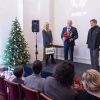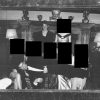Chuck Yeager, the American pilot who became the first person to break the sound barrier and was later immortalised in The Right Stuff, has died at the age of 97.
“It is [with] profound sorrow, I must tell you that my life love General Chuck Yeager passed just before 9pm ET,” Victoria Yeager said in a tweet announcing his death on Monday night.
She added: “An incredible life well lived, America’s greatest pilot, and a legacy of strength, adventure, and patriotism will be remembered forever.”
Chuck Yeager
(@GenChuckYeager)
Fr @VictoriaYeage11 It is w/ profound sorrow, I must tell you that my life love General Chuck Yeager passed just before 9pm ET. An incredible life well lived, America’s greatest Pilot, & a legacy of strength, adventure, & patriotism will be remembered forever.
December 8, 2020
A second world war fighter ace known for his bluntness and courage, it was his exploits as a test pilot in the years after the war that earned him everlasting fame and paved the way for the successful space missions of the 1960s.
Looking back on his achievements in his autobiography in 1985, Yeager wrote:
“I haven’t yet done everything, but by the time I’m finished, I won’t have missed much. If I auger in (crash) tomorrow, it won’t be with a frown on my face. I’ve had a ball.”
Twenty years of the International Space Station – but was it worth it?
Read more
Although his lack of a college education meant he was not chosen for Nasa’s burgeoning astronaut program, he and many of his air force colleagues regarded pilots in Project Mercury as “spam in a can” who did not do any proper flying. They were, to Yeager and his cohort, mere passengers “throwing the right switches on instructions from the ground”.
His death-defying adventures nevertheless gained even greater legendary status thanks to his inclusion in Tom Wolfe’s book, The Right Stuff, alongside astronauts such as John Glenn. It was then made into a critically acclaimed film of the same name in which Yeager was played by Sam Shepard.
Tributes have poured in for Yeager, led by Nasa administrator, Jim Bridenstine, who called his death a “tremendous loss” for Americans.
“Today’s passing of Gen Chuck Yeager is a tremendous loss to our nation,” Bridenstine said in a statement. “Gen Yeager’s pioneering and innovative spirit advanced America’s abilities in the sky and set our nation’s dreams soaring into the jet age and the space age. He said, ‘You don’t concentrate on risks. You concentrate on results. No risk is too great to prevent the necessary job from getting done.’”
Jim Bridenstine
(@JimBridenstine)
Today’s passing of Gen. Chuck Yeager is a tremendous loss to our nation. His pioneering and innovative spirit advanced America’s abilities in the sky and set our nation’s dreams soaring into the jet age and the space age.
Read my full statement: https://t.co/lnbNYGSjgd pic.twitter.com/gEUOmQOodG
December 8, 2020
Scott Kelly, a Nasa astronaut, said Yeager was a “true legend with the right stuff”.
Scott Kelly
(@StationCDRKelly)
Iconic Test Pilot General Chuck Yeager has slipped the surly bonds of earth. A WWII fighter ace and the first human to break the sound barrier.
He was a true legend with the right stuff. Fair winds and following seas, General Yeager. #RIPChuckYeager pic.twitter.com/1MxJA8enFU
December 8, 2020
Dan Rather
(@DanRather)
Thinking more of Chuck Yeager, and the lyrics of the old Air Force song echo in my mind: «Off we go into the wild blue yonder, Climbing high into the sun.» RIP.
December 8, 2020
Born in West Virginia in 1923, Yeager enlisted in the air force at the beginning of the second world war and worked his way up to become a fighter pilot.
Flying a P-51 Mustang named Glamorous Glennis in tribute to his girlfriend (and later wife), Glennis Dickhouse, he was credited with 12 “kills” of German planes – including five in a single dogfight. During one mission over Europe he was shot down before escaping France into Spain to rejoin the war effort.
After the war he became a test pilot and was assigned to Muroc air force base in California (later renamed Edwards air force base) as part of the secret XS-1 project, which had a goal of hitting Mach 1, the speed of sound.
On 14 October 1947, he cemented his place in history when a B-29 bomber carried his brightly coloured Bell X-1 plane 26,000 feet (7,925m) over California’s Mojave desert and let it go.
Neither Yeager nor aviation engineers knew if the plane – or the pilot – would be able to handle the unprecedented speed without breaking up. But Yeager took the X-1, which was powered by liquid oxygen and alcohol, to a speed of Mach 1.06, or about 700mph (1,126kmh) at 43,000ft (13,000m).
He then calmly landed the craft, which was also named for Glennis, on a dry lake bed, 14 minutes after it had been cut loose on a flight that was a significant step toward space exploration.
Yeager said he had noted a Mach 0.965 reading on his speedometer before it jumped off the scale without a bump.
“I was thunderstruck,” he wrote in his autobiography. “After all the anxiety, breaking the sound barrier turned out to be a perfectly paved speedway.”
However, he almost didn’t make the flight, having fallen off a horse and broken two ribs two days before he was scheduled to attempt the record. Despite being in agony, he strapped up his body and improvised a device with a broom handle so he could close the tightly spaced cockpit hatch without revealing his incapacity.
Such was the “right stuff” that so impressed Wolfe. It helped Yeager to be unfazed by having a job that took him to the brink of death with every outing – such as the 1953 flight on which he safely landed his X-1A after hitting Mach 2.4 and then losing control of the aircraft for 51 seconds.
“It’s your duty to fly the airplane,” he told an interviewer. “If you get killed in it, you don’t know anything about it anyway so why worry about it?”
After his test pilot heyday, Yeager commanded fighter squadrons and flew 127 combat missions during the Vietnam war.
In the early 1960s, he was in charge of astronaut-style training for air force personnel but that program ended when the U.S. government decided not to militarize space. Still, 26 people trained by Yeager went into orbit as NASA astronauts.
Yeager reached the rank of brigadier general and in 1997 he marked the 50th anniversary of his historic flight by taking an F-15 past the speed of sound. He then announced that it was his last military flight.
Yeager became something of a social media sensation in 2016 at age 93 when he began fielding questions from the public on Twitter and responding in a curt and sometimes curmudgeonly manner. When asked what he thought about the moon, he replied: “It’s there.”
Yeager and Glennis, who died of cancer in 1990, had four children. He married Victoria Scott D’Angelo in 2003.
Reuters and Associated Press contributed to this report.






















































Свежие комментарии